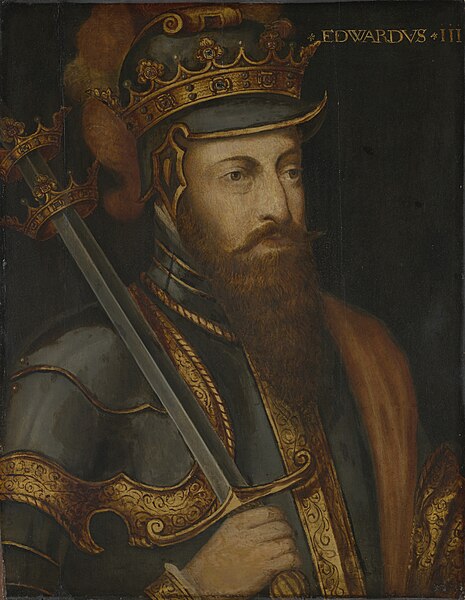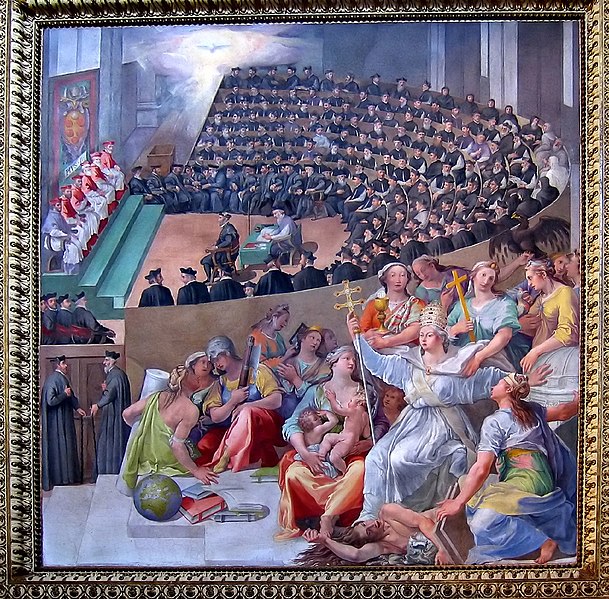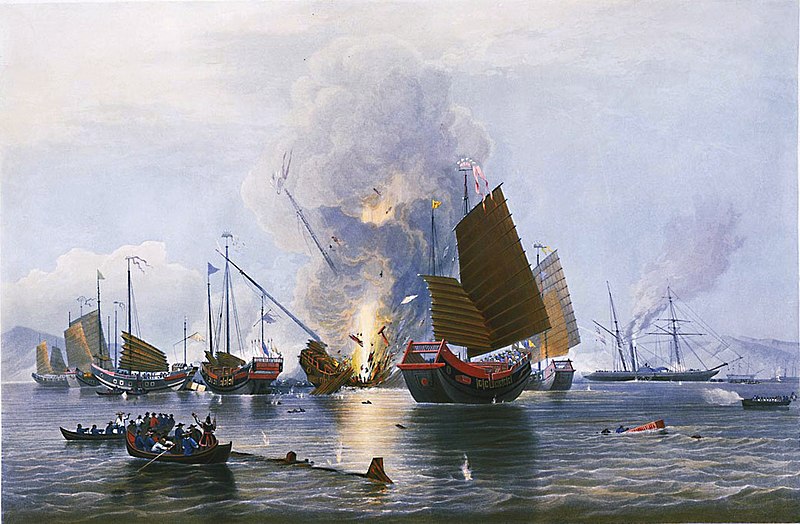January 26th stands as a day etched with significant moments in the annals of history, marking events that have shaped societies, influenced global politics, and altered the course of human endeavor.
From medieval declarations of war to the birth of nations and the defiance of natural disasters, each event on this day has contributed a unique thread to the fabric of our shared past.
This article delves into twenty such historical occurrences, spanning centuries and continents, to offer a glimpse into the diverse and profound impacts of this day.
Join us on a journey through time, exploring the depths of human resilience, the heights of innovation, and the turning points that have directed the flow of history from January 26th’s past.
January 26th Events in History
1340 – King Edward III of England is declared King of France, marking the beginning of the Hundred Years’ War
On January 26, 1340, Edward III of England proclaimed himself King of France, marking a pivotal moment that escalated the already ongoing conflicts between England and France into what would become known as the Hundred Years’ War.
This claim stemmed from Edward’s position as the son of Isabella of France, which, he argued, gave him the right to the French throne through the principle of jus sanguinis (right of blood).
Also Read: January 25 – On this Day in History
However, the French invoked the Salic Law, which prohibited inheritance through the female line, to support Philip VI’s claim to the throne. Edward’s declaration was a strategic move to assert dominance over France, both politically and militarily, leading to a series of battles that lasted over a century.

1500 – Vicente Yáñez Pinzón becomes the first European to set foot on Brazil
On January 26, 1500, Spanish explorer Vicente Yáñez Pinzón made landfall on the northeastern coast of what is today Brazil, specifically in the area of Cape of Santo Agostinho in Pernambuco. This event marked the first recorded arrival of Europeans in Brazil.
Pinzón, who had commanded the Niña during Christopher Columbus’s first voyage to the New World, was leading an expedition on his own at this time.
Also Read: January 27th Events in History
Although Pinzón did not claim the land for Spain due to the Treaty of Tordesillas, which had divided the newly discovered lands outside Europe between Portugal and Spain, his voyage contributed significantly to European exploration and eventual colonization of the Americas.
1531 – Lisbon, Portugal is hit by an earthquake—thousands die
On January 26, 1531, Lisbon, the capital of Portugal, was struck by a devastating earthquake, causing widespread destruction and reportedly killing thousands of people, although exact figures are not known. The earthquake significantly damaged the city, including the royal palace and numerous churches.
This natural disaster was one of the earliest recorded earthquakes in European history and had a profound impact on the city’s development, influencing future construction and urban planning to mitigate the effects of such calamities.
1564 – The Council of Trent issues its conclusions in the Tridentinum, establishing a distinction between Roman Catholicism and Protestantism
The Council of Trent, which ran in several sessions between 1545 and 1563, concluded with the issuance of the Tridentinum on January 26, 1564.
This comprehensive document summarized the Council’s decrees and counter-reformation doctrines, establishing clear doctrinal distinctions between Roman Catholicism and the emerging Protestant churches.
The Council of Trent was convened in response to the Protestant Reformation and aimed to address abuses within the Church, affirm key Catholic doctrines, and halt the spread of Protestantism.
It had a lasting impact on the religious landscape of Europe, solidifying the division between Catholicism and Protestantism and leading to significant reforms within the Catholic Church.

1699 – For the first time, the Ottoman Empire permanently cedes territory to the Christian powers
On January 26, 1699, the Treaty of Karlowitz was signed, marking the first significant loss of territories by the Ottoman Empire to the Christian European powers, concluding the Great Turkish War.
The treaty was negotiated in Sremski Karlovci (now in Serbia) and involved the Ottoman Empire on one side and the Holy League, consisting of the Holy Roman Empire, Poland, Venice, and Russia, on the other.
This treaty is considered a turning point in European and Ottoman history, as it led to the Ottoman Empire’s gradual decline in Europe, significantly altering the balance of power in the region.
It ceded control of significant territories, including Hungary, Transylvania, and parts of Croatia and Slovenia, to the Holy Roman Empire, thus reshaping the political landscape of Europe.
1788 – The British First Fleet sails into Port Jackson to establish Sydney, the first permanent European settlement on the Australian continent. Celebrated as Australia Day
On January 26, 1788, the British First Fleet, commanded by Captain Arthur Phillip, sailed into Port Jackson to establish the first European settlement on the Australian continent, marking the foundation of Sydney.
This date has since been commemorated in Australia as Australia Day. The fleet, consisting of 11 ships carrying convicts, marines, and a few free settlers, had left England in May 1787 to establish a penal colony at Botany Bay. Finding Botany Bay unsuitable, Phillip moved the fleet to the more favorable Port Jackson.
The establishment of Sydney was a significant moment in the colonial history of Australia, signifying the beginning of widespread European settlement and the impact it would have on the indigenous Aboriginal peoples and their lands.
1808 – The Rum Rebellion is the only successful (albeit short-lived) armed takeover of the government in Australia
The Rum Rebellion on January 26, 1808, was a unique event in Australian history, marking the only successful armed takeover of the government. The rebellion was primarily led by the New South Wales Corps against Governor William Bligh, known for his role in the Mutiny on the Bounty.
The corps was dissatisfied with Bligh’s attempts to regulate the colony’s economy and reduce the military’s power, particularly their control over the trade in rum, which served as a form of currency at the time.
The rebellion led to Bligh’s arrest and the installation of Major George Johnston as the interim governor. The Rum Rebellion highlighted the challenges of early colonial governance and the tensions between military power and civil authority in Australia.
1837 – Michigan is admitted as the 26th U.S. state
On January 26, 1837, Michigan was admitted to the Union as the 26th state of the United States of America. This followed a period of conflict known as the Toledo War, a boundary dispute with Ohio. The conflict was resolved when Michigan agreed to cede the Toledo Strip to Ohio in exchange for the western portion of the Upper Peninsula.
The state’s admission to the Union marked the end of its territorial status and the beginning of its development into a significant center of industry and trade in the Great Lakes region. Michigan’s vast natural resources, particularly timber and later iron and copper in the Upper Peninsula, played a crucial role in its growth and economic development.

1841 – The United Kingdom formally occupies Hong Kong, which China later cedes
On January 26, 1841, during the First Opium War, the United Kingdom formally occupied Hong Kong. This occupation followed a series of military engagements between the British and the Qing Dynasty of China, primarily over the trade in opium.
The conflict resulted in the Treaty of Nanking in 1842, under which China ceded Hong Kong Island to the British Empire. The cession of Hong Kong marked the beginning of British colonial rule over the territory, which would last until 1997.
Hong Kong developed into a major trading and financial center under British rule, serving as a crucial gateway between the West and China.
1856 – First Battle of Seattle. Marines from the USS Decatur drive off American Indian attackers after all day battle with settlers
The First Battle of Seattle occurred on January 26, 1856, during the Puget Sound War, part of the larger conflict known as the Indian Wars in the Pacific Northwest.
Native American warriors, discontent with the encroachment of European-American settlers on their lands, attacked the settlement of Seattle. Marines from the USS Decatur, anchored in Elliott Bay, alongside local settlers, defended the settlement in an all-day battle.
The defenders used the ship’s cannons and small arms to repel the attackers. Although the battle resulted in few casualties on either side, it was significant in the history of the American West, illustrating the tensions and violent conflicts between indigenous peoples and settlers during the period of westward expansion.
1861 – The state of Louisiana declares its secession from the Union
On January 26, 1861, Louisiana took a dramatic step in the prelude to the American Civil War by declaring its secession from the United States. Louisiana was the sixth state to secede, following South Carolina, Mississippi, Florida, Alabama, and Georgia.
This decision was driven by concerns over states’ rights and the future of slavery, which was a cornerstone of Louisiana’s economy, especially in the plantation system.
The secession of Louisiana and other Southern states led to the formation of the Confederate States of America, a coalition of states that sought to establish their own nation in order to preserve their distinct economic and social systems, leading to the outbreak of the Civil War in April 1861.
1870 – The American sorority Kappa Alpha Theta is founded at DePauw University
Kappa Alpha Theta, the first Greek-letter fraternity for women, was founded on January 27, 1870, at DePauw University in Greencastle, Indiana. The establishment of Kappa Alpha Theta marked a significant moment in the history of higher education and women’s rights in the United States, offering women a support system and advocacy group at a time when women’s roles in academic and public life were severely limited.
The sorority was founded by Bettie Locke Hamilton, along with three other women, as a counterpart to the male Greek-letter societies prevalent in universities and colleges. Kappa Alpha Theta played a crucial role in promoting leadership, academic excellence, philanthropic efforts, and social advancement among its members.
1885 – The Mahdist War begins in the Sudan
The Mahdist War, also known as the Mahdiyya Rebellion, began on January 26, 1885, when forces loyal to Muhammad Ahmad, who proclaimed himself the Mahdi (the guided one), laid siege to Khartoum, the capital of Sudan.
The rebellion was a nationalistic response against the oppressive rule of the Turco-Egyptian administration and later against British influence in the region. The Mahdist forces aimed to establish a state based on Islamic principles.
The war led to the fall of Khartoum and the death of the British General Charles Gordon in January 1885, a significant event that shocked the British public and government. The Mahdist state remained in power until 1898 when it was defeated by British and Egyptian forces, leading to the establishment of Anglo-Egyptian Sudan.
1905 – The world’s largest diamond, the Cullinan, is found in South Africa
On January 26, 1905, the largest gem-quality rough diamond ever found, the Cullinan Diamond, was discovered at the Premier No.2 mine near Pretoria, South Africa.
Weighing an astonishing 3,106.75 carats (about 1.37 pounds or 621.35 grams), the diamond was named after Sir Thomas Cullinan, the owner of the mine. The discovery of the Cullinan Diamond caused a worldwide sensation.
It was eventually bought by the Transvaal Colony government and presented to King Edward VII of the United Kingdom as a birthday gift. The diamond was cut into several pieces, the largest two of which, the Great Star of Africa (Cullinan I) and the Lesser Star of Africa (Cullinan II), are part of the British Crown Jewels.
1911 – Glenn H. Curtiss flies the first successful American seaplane
Glenn H. Curtiss, an American aviation pioneer, made history on January 26, 1911, by successfully flying the first American seaplane, also known as a hydroaeroplane. This flight took place in San Diego, California, and represented a significant milestone in the development of aviation technology.
Curtiss’s invention added a new dimension to flying by allowing aircraft to take off from and land on water, greatly expanding the possibilities for travel and military operations. Curtiss’s work laid the groundwork for the development of future seaplane designs and contributed to the growth of both civil and military aviation worldwide.
1924 – Saint Petersburg, Russia, is renamed Leningrad in honor of Lenin
On January 26, 1924, shortly after the death of Vladimir Lenin, the founder of the Soviet Union and leader of the Bolshevik Revolution, the city of Saint Petersburg was officially renamed Leningrad in his honor.
This renaming reflected the immense influence Lenin had on the country and its direction following the October Revolution of 1917. Saint Petersburg, the imperial capital of Russia before Moscow, had been known as Petrograd during World War I to remove the Germanic elements from its name.
The change to Leningrad marked a significant move in the Soviet government’s efforts to erase pre-revolutionary history and celebrate Soviet ideology. The city would retain this name until 1991, when it was reverted back to Saint Petersburg following the dissolution of the Soviet Union.
1930 – The Indian National Congress declares 26 January as Independence Day or as the day for Poorna Swaraj (“Complete Independence”) which was later shifted to August 15th
On January 26, 1930, the Indian National Congress proclaimed the Declaration of Independence of India, resolving to fight for Purna Swaraj, or complete self-rule independent of British control.
This day was chosen to reject the Dominion status offered by the British Regime. The declaration was the result of growing dissatisfaction with British rule, including repressive laws and economic policies that were seen as detrimental to India.
This date became a significant milestone in the Indian struggle for independence, and January 26 was celebrated as Independence Day until India actually achieved independence on August 15, 1947. January 26 was later chosen as the day the Constitution of India came into effect in 1950, transforming India into a republic.
1939 – Spanish Civil War: Troops loyal to nationalist General Francisco Franco and aided by Italy take Barcelona
On January 26, 1939, Barcelona, the stronghold of the Republican forces in the Spanish Civil War, fell to the Nationalist forces led by General Francisco Franco, with significant military assistance from Fascist Italy.
The capture of Barcelona was a decisive moment in the Civil War, signaling the imminent victory of Franco’s forces. It led to the collapse of the Republican resistance and the establishment of Franco’s dictatorship, which would last until his death in 1975.
The fall of Barcelona also marked a significant loss for the democracies of Europe and was a prelude to the wider conflicts that would engulf the continent during World War II.
1950 – India officially becomes a republic and the Constitution of India goes into effect
India became a sovereign democratic republic on January 26, 1950, with the adoption of its Constitution, replacing the Government of India Act (1935) as the governing document of India. This historic transition marked the culmination of India’s struggle for independence from British rule and established the framework for its democratic government.
Dr. B.R. Ambedkar played a crucial role as the chairman of the Drafting Committee, presenting a Constitution that guaranteed a wide range of civil liberties, outlined the structure of government institutions, and ensured checks and balances within the system.
The day is celebrated annually as Republic Day in India, with festivities and a grand parade in the capital, New Delhi, to commemorate this milestone in Indian history.
1978 – The Great Blizzard of 1978, a rare severe blizzard, strikes the Ohio Great Lakes region for 3 days and kills at least 70
The Great Blizzard of 1978 was one of the most powerful and devastating winter storms to hit the Ohio Great Lakes region in the 20th century.
Beginning on January 26 and lasting for three days, it unleashed extremely high winds, record snowfall, and chilling temperatures, creating snowdrifts that buried houses and cars. The blizzard caused widespread disruption, closing schools, businesses, and roads, and leading to significant power outages.
The storm was not only remarkable for its intensity but also for its impact, contributing to at least 70 fatalities and causing millions of dollars in damage. The Great Blizzard of 1978 remains a pivotal moment in the region’s history, highlighting the vulnerabilities and challenges of dealing with extreme weather events.
